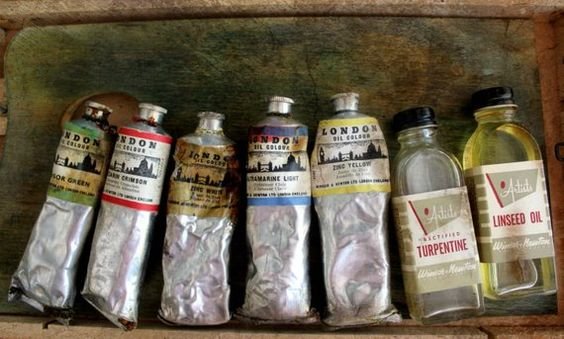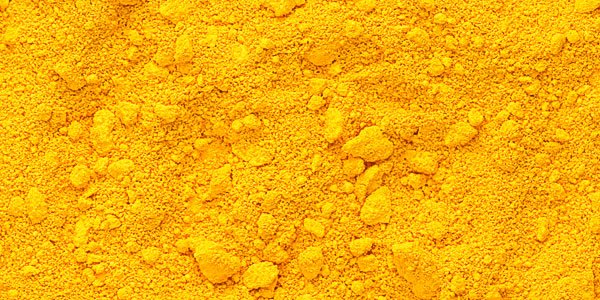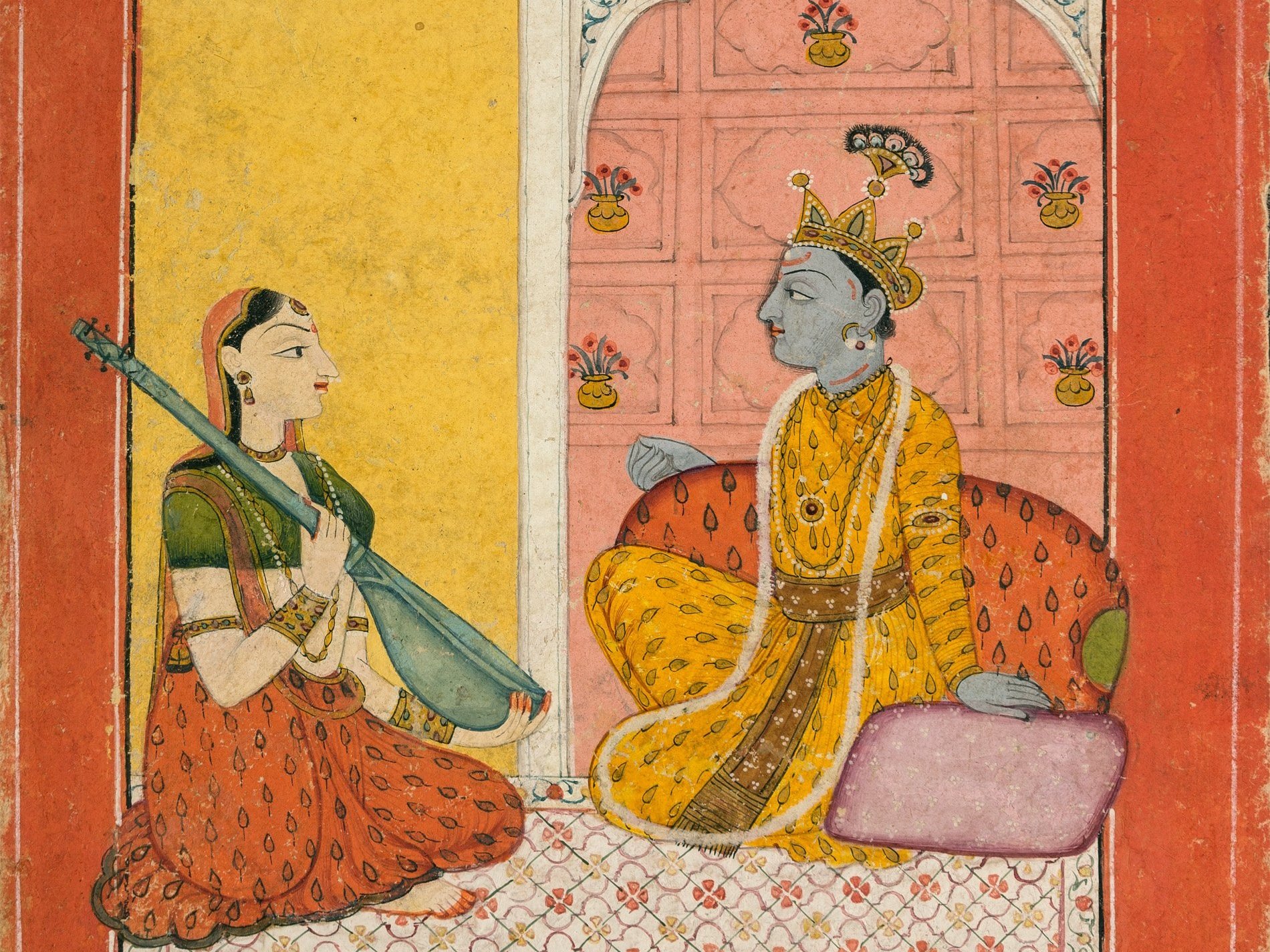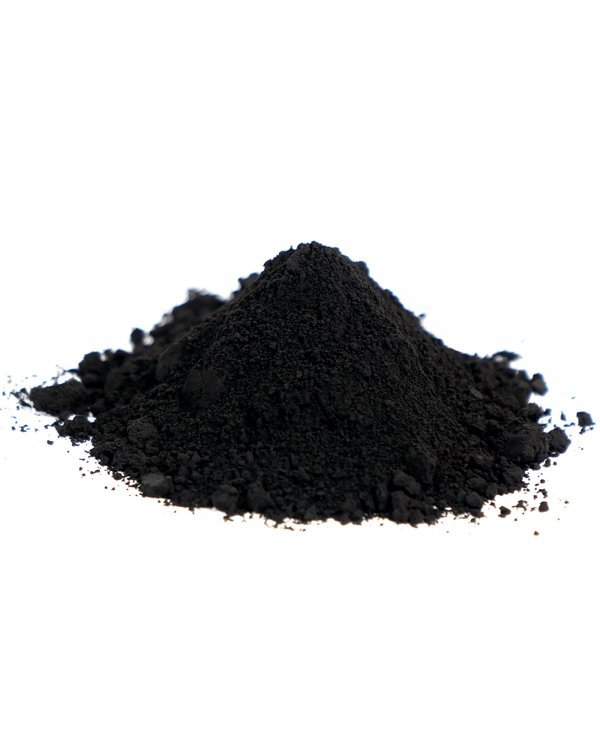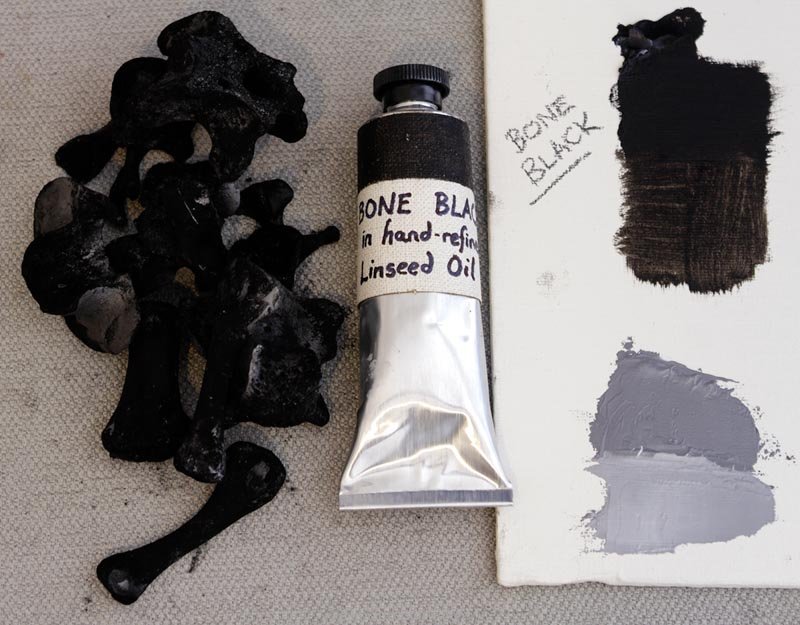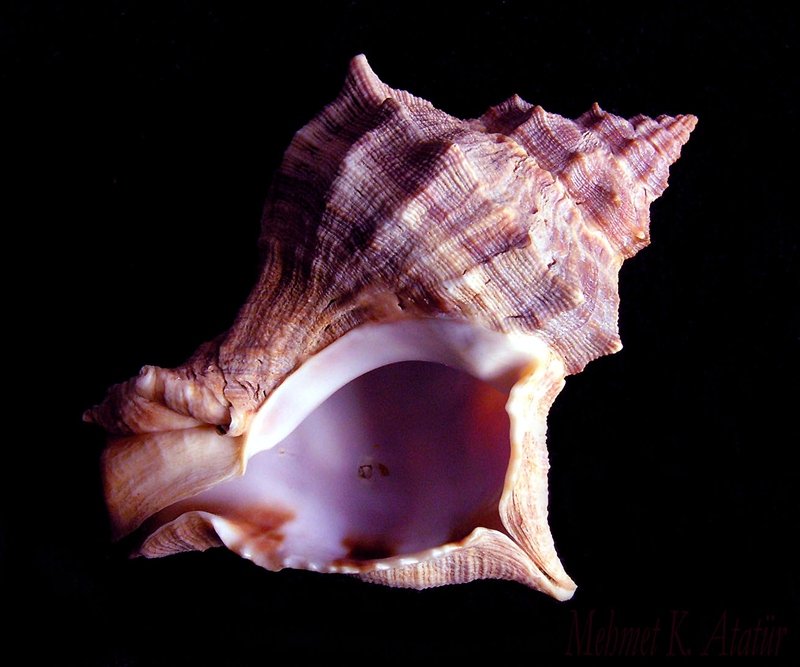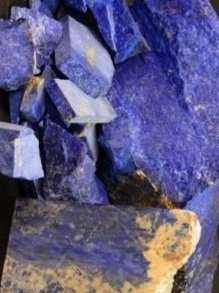So if you know anything about me, you know I love paint…ooooooh how I love it. Sure, I love found objects but honestly my first artistic love is paint. Every single piece of assemblage sculpture I create MUST be painted or it isn’t really me. There is something about paint that has the ability to transport art into a different realm. And, I have to say, for me, digital art has never been satisfying to create because I really really want to get my hands all painty painty. If my hands are clean after a day painting in the studio, then something is really wrong. Now, with all that being said, these days paint is relatively easy to come across. You head to the store and you’ve got paint. In fact, you can head to the dollar store and buy paint…mind you…it’s not very good paint…but it’s paint. Back in the olden days it must have seemed like alchemy; something physical is transformed into something that could be used to create worlds on canvases, buildings, caves, etc. Here’s the where it gets tricky, one needed to find something colourful to make a pigment from, before it was put in a tube. So with no further ado, let’s take a peek at some of the strange stuff folks have made pigment from throughout history.
Groovy Old-Timey Pigments
Indian Yellow
So this is a colour that you can find in some very famous paintings, perhaps the most famous painting being Van Gogh’s “Starry Night”. This pigment originally came from India and was used since 15th century. It is a super vibrant yellow, but there was only one problem with it…it kinda smelled. Which sort of made sense because it was made from dried cow urine…but not just any cow urine…cow urine that was really bright bright yellow. Now, you may be asking what made this urine so yellow…well it turns out the peeing cows were eating lots and lots of mango leaves which for some reason made the urine quite bright…and ripe. You’ll never look at “The Starry Night” the same way, will you?
Bone Black
There are a variety of black pigment options. Each one is made from something a bit different. Mars Black is made from iron, Carbon Black it made from charring organic material…after a night of roasting marshmallows over the campfire, you could go and gather the charred wood and make Carbon Black if you were so inclined. Lamp Black was made from burning oil. Which brings us to Bone Black (aka Ivory Black) this was and is made from charred bones. That’s right…bones. Now don’t worry it’s not like Soylent Green (or Soylent Bone Black) where they are making it out of people, but if you are vegan, you might consider using Carbon Black or Mars Black.
Tyrian Purple
This colour sounds kind of Lord of the Ringsy/Game of Thronesy, which is appropriate because this was once a regal colour. Only the wealthy and powerful had access to this pigment due to the difficulty of creating it. It was often a pigment only used when depicting emperors or the elites. Tyrian purple gets its name from the port city of Tyre where it was mainly produced. And what, you may ask was this made from? Small sea snails. You might think that it would be the shell that was ground up…BZZZZZZ…wrong. It was the dried secretion that it produced. Legend has it that it was invented when Tyros (Tyros was a mistress to a Phoenician god) took her little doggy out for a walk when suddenly his mouth was all purple…from chewing up snails. So it turns out a dog discovered the colour purple.
Dragon Blood
This was said to be a really rich red. As the story goes it was created when a dragon and an elephant battled it out…which is something you don’t see every day. Anyway, the blood from these battles that the pigment is what this pigment was said to be created from…I’m not sure if it was the elephant’s blood, the dragon’s blood, or a mixture of both. Well, it’s a good marketing ploy. In actuality, it was made from tree resin of the Dracaena species of trees which creates these beautiful red resin drops. Not as dramatic as a dragon battle but still purdy.
Ultramarine Blue
You don’t really think of paints as a status symbol. Sure a painting could be considered a form of status, like owning a Picasso, but you don’t think of a colour that way, at least these days. Believe it or not Ultramarine Blue was a status symbol colour. Originally the pigment was made from the beautiful blue mineral, lapis lazuli, which was mined in Afghanistan. So, not a hop skip and a jump away for those living in Europe, thus the name Ultramarine, which translates to “beyond the sea” in Latin. Now let’s say you wanted to impress your friends at a dinner party with your art acquisitions, well, if you had a painting with a little blue….that would be quite a thing, but to have a lot of ultramarine…well, you’re a big shot then. So if you wanted something painted blue…you’d need a lot of green.
Mummy Brown
I saved my favourite weirdo colour for last. Mummy brown is colour that ranged from a burnt umber hue to a raw umber hue and popped up in the 16th and 17th century. So the reason for the name was because it was quite literally made from mummies…yes mummies. Believe it or not mummies were ground up and made into paint, then placed in a tube, and this was done until sometime in the 1930s…when it suddenly was seen as distasteful, which oddly enough coincides with the decade the Boris Karloff film was released; perhaps people became more superstitious or maybe it made more apparent that artists were painting with ground up corpses. I should mention that it wasn’t just human mummies, the ancient Egyptians also mummified cats, so a fair amount of mummy pigment came from our feline friends. You would think that using Mummy Brown would be the curse worthy.
Perhaps you’ll thing of painting a bit differently, now. Paint can be surprising, sometimes those colours come from very unusually sources, especially when we go back in time. Happy painting.

